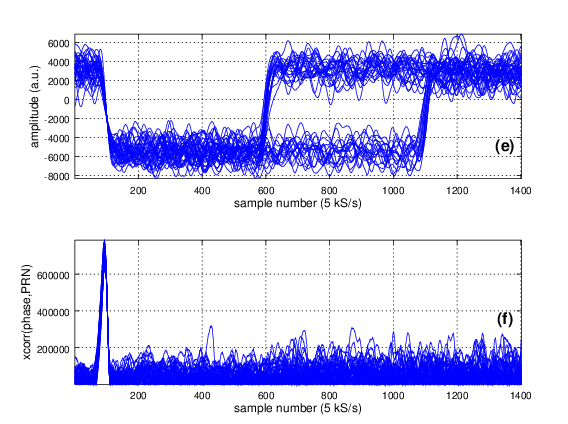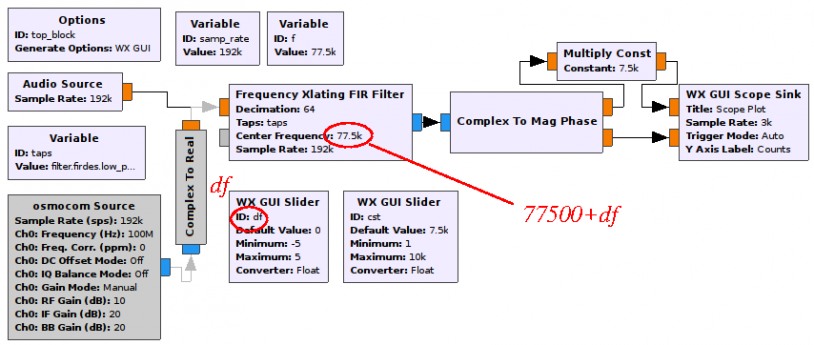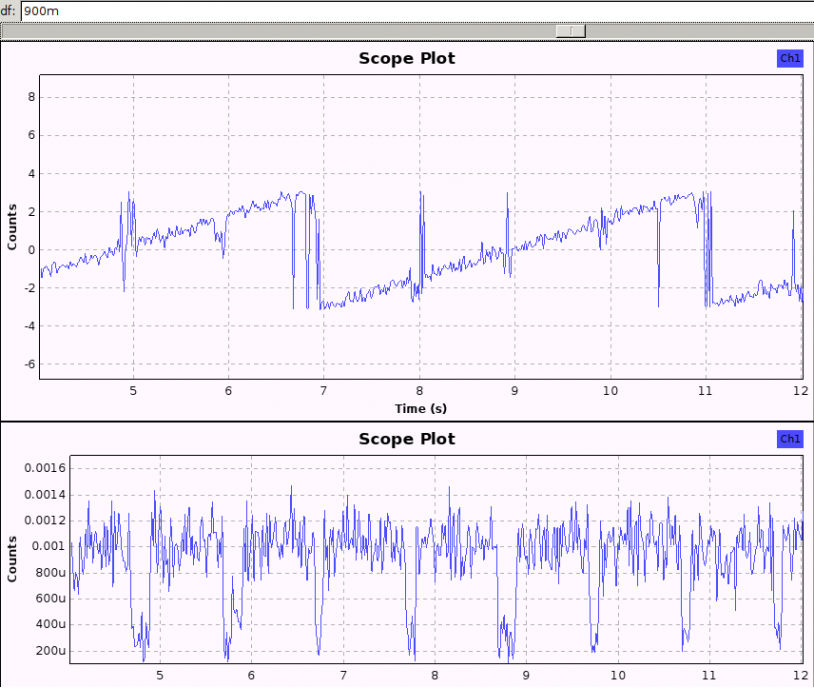Keeping time has been a requirement for a long time, if only for navigators to measure longitude and position their ships during long journeys through oceans [1]. Current time dissemination have become more stringent, with applications ranging from time-synchronization of communications (e.g. TDMA in GSM), bank transfers or time-synchronization over computer networks (NTP). The classical means of time-synchronization -- using the 1PPS output of GPS receivers -- has been under attack either through simple jamming techniques, but much more worrisome lately through spoofing. Hence, alternative time dissemination means are needed. Despite the cancellation of the latest LORAN evolutions in Europe, low frequency (VLF) solutions appear attractive due to their long range, ease of implementation and complementarity to the microwave GPS solution. Various VLF emitters are accessible in Western Europe, DCF77 and France Inter being the most commonly used solution.
Fig1: top is the flowgraph using GNURadio of the signal acquired by a 192 kSamples/s sound card for extracting the DCF77 signal. Bottom: magnitude (AM modulation) and phase from the DCF77 signal.
While DCF77 time dissemination is classically considered with its amplitude modulation, a second phase modulation was added for experimental purposes. At an age when cross-correlation with the pseudo-random code generating the phase sequence is accessible to most microcontrollers, limiting time dissemination capabilities to the AM signal induces lost range (poor signal to noise ratio) and resolution (low bandwidth). We demonstrate software defined radio demodulation of the phase encoding on DCF77 for time dissemination, and confirm the 10-fold improvement on timing accuracy with respect to the amplitude modulated signal.

Fig2: AM and PM processing of the DCF77 signal for timing purposes. While the AM information encodes a time information in the width of the pulse, its timing capability is poor due to the narrowband filter needed to efficiently filter the coarse AM modulation. On the opposite, the pseudo random number sequence imprinted on the phase allows, through cross-correlation, for efficient pulse compression, leading to improved timing capability.
[1] D. Sobel, Longitude: The True Story of a Lone Genius Who Solved the Greatest Scientific Problem of His Time, Walker & Co. (2007)


